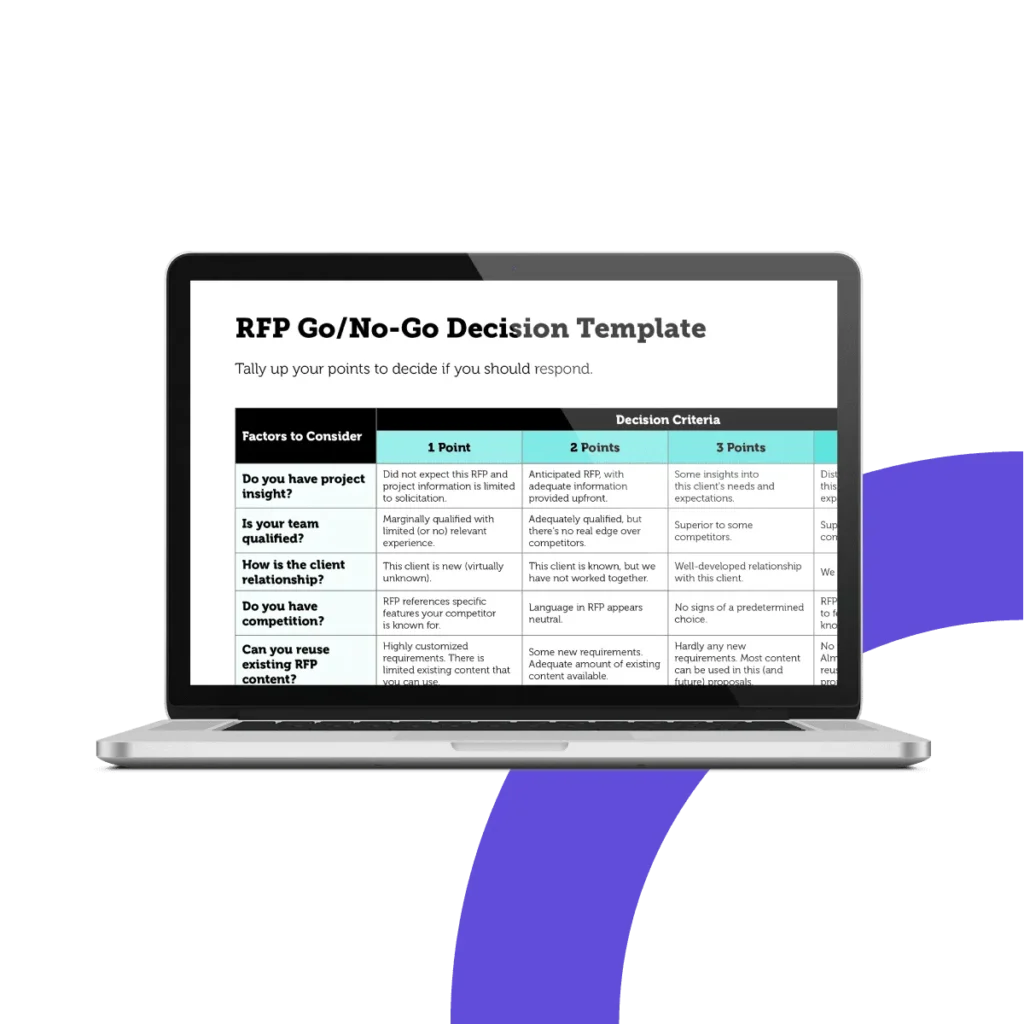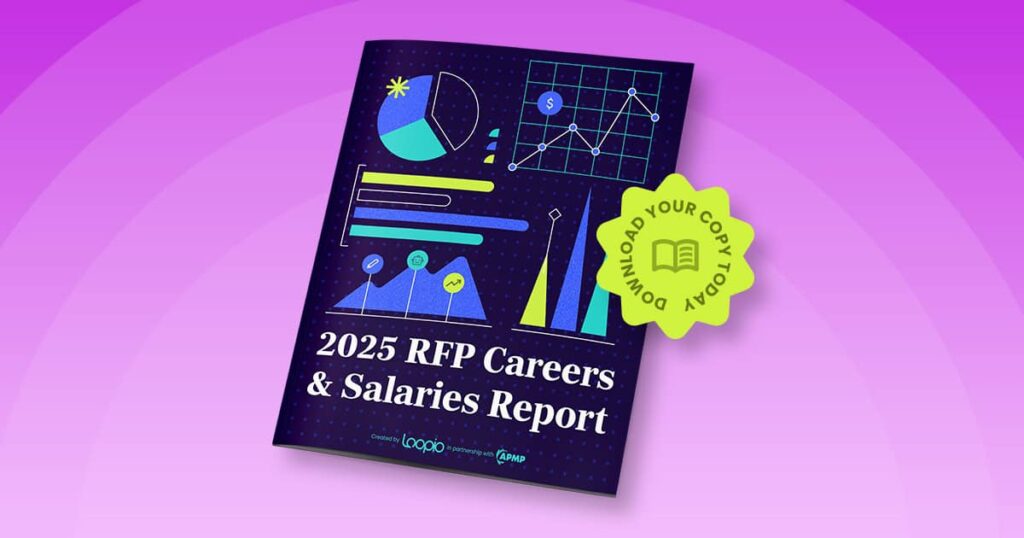Go/No-Go Decision Template for RFPs
Assess customer fit at the very beginning of a project’s life cycle with this helpful project management tool. Try the go/no-go decision template today and prioritize incoming RFPs with confidence.

Proactively Respond to the Right RFPs at the Start of Your Project Lifecycle
This essential go/no-go decision template uses best practices from project managers and insights from proposal professionals to help you select which RFPs advance to the next stage.
Ensure your team makes informed go decisions by using this scoring system to rank the different project aspects like:
Client Relationship
How strong is the client’s relationship with your company?
Project Insight
Are you aware of any unique criteria or expectations?
Team Availability
Do you have the resources to complete the project?
Download Go/No-Go RFP Template
FAQs About Go/No-Go Decisions
A go/no-go checklist is a decision-making tool that helps response management professionals determine which RFPs are worth responding to (go decisions) and which are not worth responding to (no-go decisions).
This checklist/template examines different factors to help your team make the right go or no-go decision in the RFP evaluation process. For example, it will help you answer important questions like:
- Can you win it? Is the language in the RFP neutral, or does it reference competitor features?
- Can you do it? Review your internal capacity. Does the core response team have the bandwidth to take on new projects?
- Do you want it? Think about the fit between this opportunity and your long-term business goals. Are you aware of obstacles?
- And more…
Having the answers to these essential questions helps your team make informed decisions on whether or not to proceed with an RFP response.
An example of a go/no-go process is when an organization receives a request, examines different criteria, and finally decides whether to respond to the request (go) or not respond to the request (no-go).
Here’s an example of go/no-go in action:
Granny Smith runs a small fruit business and receives a request from a large grocery chain. She skims the proposal, and some key details stand out to her:
🔥 Competition is fierce: the request specifically mentions McIntosh apples, a variety that only her competitor grows.
🧑🌾 Resources are sparse: the farmers she works with are slammed with orders, and Granny herself is busy selling her products at farmers’ markets.
😣 No project insight: Granny did not anticipate this request and has limited information about the scope and details.
After examining the factors above (and more), Granny Smith decides to focus on her existing business, so she does not respond to the RFP. This organized go/no-go process helps Granny proactively reach a decision while saving her valuable time—a win-win.
It’s the choice a company makes after receiving an RFP. But, if we break down the term go/no-go decision, there are actually two separate meanings.
🟢 Go decision: when a proposal team scores the various factors of an RFP and rules that the opportunities in the request are worth pursuing (e.g. your company has had success with similar clients).
🔴 No go decision: when a proposal team scores the various factors of an RFP and can identify several obstacles associated with the request (e.g. the core proposal team has minimal bandwidth). As a result, your company does not pursue the RFP.
It depends—you can use a powerpoint template or an RFP evaluation matrix like the one provided here. Whatever format you select, your team should implement a go/no-go system to save valuable time and resources.
Outside of the immense time savings mentioned above, there are many other important reasons to set a go/no-position and implement a scoring system:
- Tools, like go decision templates, help encourage a proactive response to RFPs to avoid any last-minute scrambling.
- A standard scoring system eliminates bias/personal opinion when weighing the pros and cons of an incoming RFP.
- These templates help set a company-wide example to thoughtfully consider workload and team capacity before taking on big projects.


